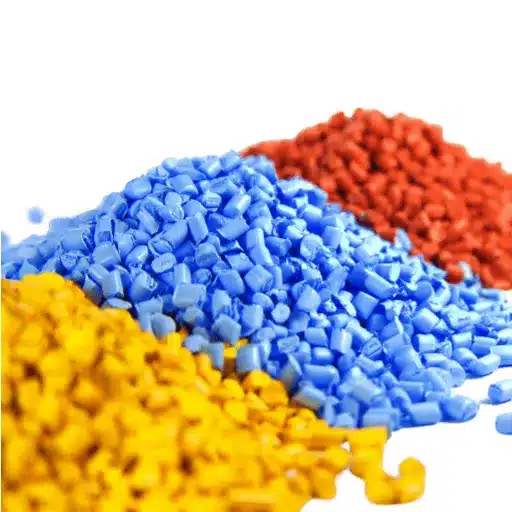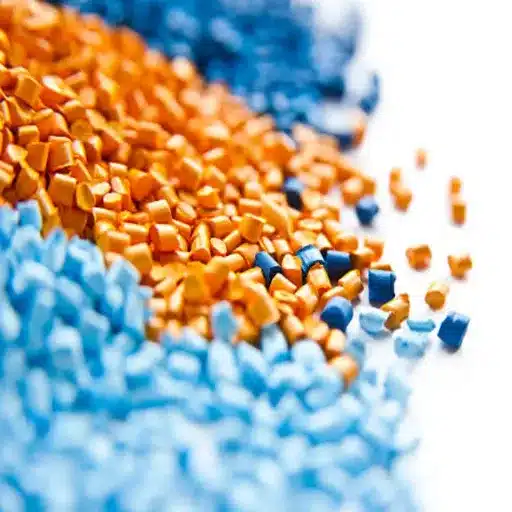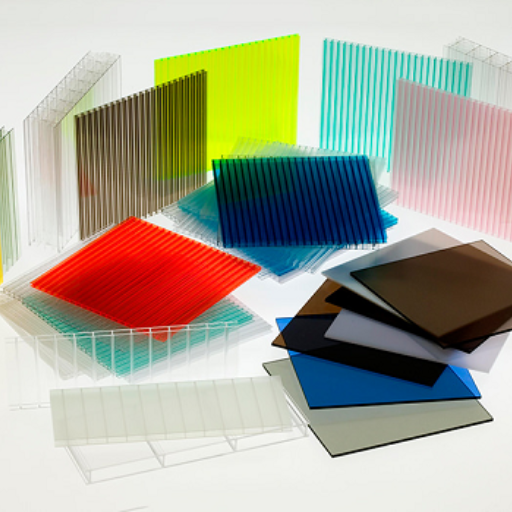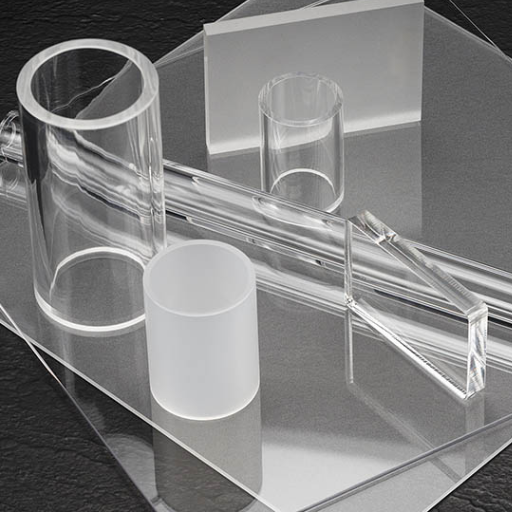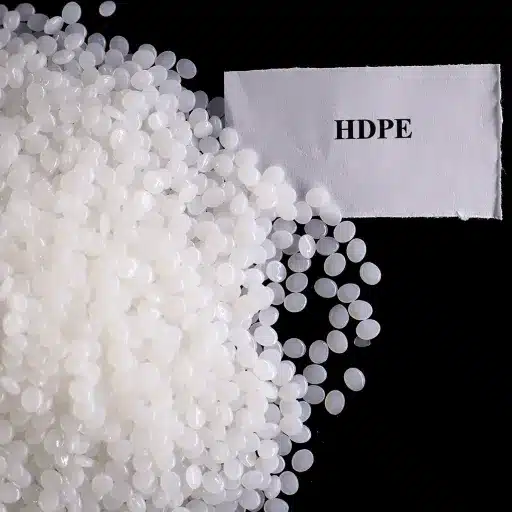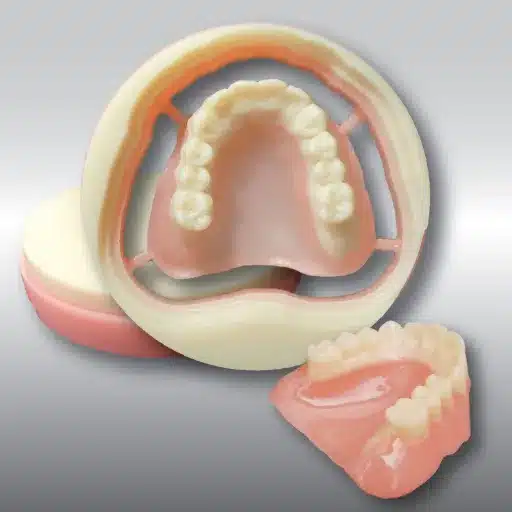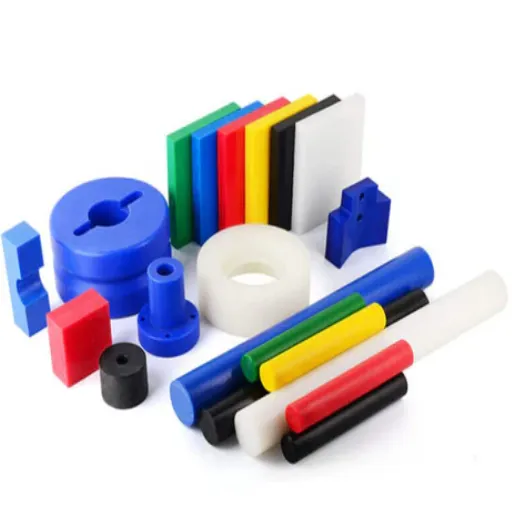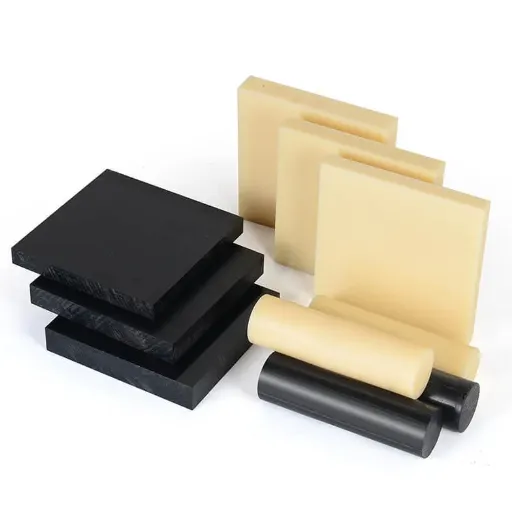High-Density Polyethylene (HDPE) is a material that is not just very durable but also the strongest and most flexible among all plastics. Moreover, HDPE is one of the most important components in various industries like packaging, construction, and consumer goods, to mention a few. So, what is it that HDPE actually cannot do? We will discuss the crucial properties of HDPE that make it a must-have material, the types of its applications that are indeed very wide and the production and use impact on the environment in all three aspects: land, air and water. This article is going to be very interesting and enlightening whether you are a supporter of sustainability, a professional in manufacturing or just an inquisitive person wanting to know more about the materials that are affecting our lives every day. So, keep reading to see how HDPE turns out to be a strong material in the modern world.
Introduction to HDPE

What is High-Density Polyethylene?
High-Density Polyethylene (HDPE) is a thermoplastic polymer of the monomer ethylene that is very flexible, strong, and light. As its name suggests, HDPE has a good strength-to-density ratio and it is one of the main materials for plastic bottles, pipes, and containers as well as geomembranes. Besides being strong, the material is also resistant to moisture and chemical corrosion, thus, consumers and industries are both choosing HDPE as a reliable option. Furthermore, it is 100% recyclable, which is one of the reasons why it is so widely adopted by the industries that focus on sustainability. Based on the latest statistics, world demand for HDPE is still on the rise due to its versatile use in sectors like construction, packaging, and healthcare where the critical operations are supported with minimum environmental footprints.
💡 Key Statistics
- Density Range: 0.93 to 0.97 g/cm³
- Recyclability: 100% recyclable material
- Resin Identification Code: #2
- Global Demand: Steadily increasing across construction, packaging, and healthcare sectors
History and Development of HDPE
High-Density Polyethylene (HDPE) was first made and brought into the market in the 1950s with German chemist Karl Ziegler and Italian chemist Giulio Natta both awarded the Ziegler-Natta catalyst. The modern-day A to Z in polymerization of ethylene occurred under low pressure, thus flooding the market with HDPE’s unique structure and properties. This was an innovation that assured a turning point in polymer chemistry and made the creation of a strong yet light material that could even redefine the likes of packaging and construction industries.
The latest data show that HDPE is still evolving in manufacturing and sustainability efforts. Demand is seen to increase steadily and the main contributing factor is that HDPE has been largely utilized in the automotive industry where light but strong parts are the norm. The world-wide movement towards eco-friendly solutions has resulted in a major recycling of HDPE that has significantly reduced waste and made the circular economic practice prevailing. It also continues to be the same in terms of technological advancements and changing global priorities, thus, HDPE’s role as a vital resource in modern applications has been further strengthened.
Comparison with Other Types of Polyethylene
High-Density Polyethylene (HDPE) is often put on the same scale with other polyethylene types, such as Low-Density Polyethylene (LDPE) and Linear Low-Density Polyethylene (LLDPE), because of their different structural and functional characteristics. HDPE has an advantage of very high strength-to-density ratio which means that it is the perfect material for piping, automotive components, and heavy-duty containers especially where durability is the primary consideration. On the contrary, LDPE is not as strong and rigid as HDPE, for this reason, it is often used for making plastic bags, cling wraps, and tubing of flexible materials that can be stretched. LLDPE offers more flexibility and resistance to impact hence it is widely used in films and packaging materials that must have both strength and flexibility.
| Property | HDPE | LDPE | LLDPE |
|---|---|---|---|
| Strength-to-Density Ratio | Very High | Low to Moderate | Moderate to High |
| Flexibility | Moderate | High | High |
| Chemical Resistance | Excellent | Good | Good |
| Melting Point | High | Low | Moderate |
| Common Applications | Pipes, containers, automotive parts | Plastic bags, wraps, tubing | Films, packaging materials |
| Cost | Moderate | Low | Moderate |
Recent industrial statistics show that HDPE’s remarkable chemical resistance along with the very high melting point give it a clear edge in applications where such properties are very critical. On the other hand, LDPE’s low price and ease of processing keep it in use for making products that are light and price sensitive. Thinner and stronger films with smaller material consumption made in line with the sustainability trend have been made possible by the latest LLDPE formulations. Each of the polyethylene types has its own merits, thus, it becomes easier for manufacturers to choose the most suitable one depending on the application.
Physical and Material Properties of HDPE

Key Characteristics of HDPE
High-Density Polyethylene (HDPE) is a material that evenly combines the features of strength, durability, and low weight. It has a big strength-to-density ratio, which makes it an excellent material for tough applications like pipes, containers, and industrial parts. HDPE is also very resistant to chemicals and corrosion, so it will even last long in the harshest conditions. Moreover, it has great resistance to impacts and is flexible, which are the very things that make it suitable for applications where mechanical stress is a factor. HDPE also has low moisture absorption and is water-impermeable, which adds to its functionality, thus making it appropriate for the transport of water and gas. All these properties plus the fact that it is recyclable make HDPE an option that industries choosing sustainability and performance together still rely on.
🔍 Core Characteristics at a Glance
Optimal for demanding applications
Withstands harsh environments
Durable under mechanical stress
Water-impermeable properties
Reduces transport costs
Environmentally sustainable
Durability and Strength Factors
In the case of durability and strength, HDPE (High-Density Polyethylene) comes out on top compared to many other materials in its group. Its ultimate tensile strength of around 3,000 to 4,000 psi ensures that it can withstand a lot of tension without giving way. A recent study indicates that there has been a considerable increase in the frequency of people searching for information about HDPE, particularly in relation to its performance over time in harsh climates. This is an indication of the material’s outstanding resistance to breaking, hitting, and the negative effects of UV light or chemicals, hence making it very useful in the industry. Moreover, HDPE’s low density does not detract from its strength; rather, it provides a solution that industry sectors from construction to packaging can rely on.
⚡ Strength Performance Metrics
Ultimate Tensile Strength: 3,000 to 4,000 psi
Performance Duration: Excellent long-term durability in harsh climates
Resistance Factors: Breaking, impact, UV light, and chemical exposure
Temperature and Chemical Resistance
HDPE is famous for its outstanding property of enduring very high and very low temperatures without losing its integrity, that is, -100°F to almost 180°F. Hence, it has a very wide range of applications over different weather conditions and its usage in various industries. Besides, together with chemical resistance, an outstanding aspect of HDPE, it can stand even the most aggressive chemicals, thus controlling the cleaning and maintenance frequency to the barest minimum, and most importantly, durability in the harshest surroundings. Data from the latest research reveals that interest in this area has been consistently growing and one of the aspects that cut across is how the mentioned properties perform under combined stressors such as higher temperatures and aggressive chemicals. In response, researchers have published articles stating that HDPE does not give up its resistance when the external factors are simultaneous; hence, it is the best choice for places with high demands such as chemical processing plants and outdoor pipe laying.
🌡️ Temperature Range Specifications
Common Applications of HDPE

HDPE in Packaging and Containers
High-Density Polyethylene (HDPE) is the most preferred material in packaging and containers with its remarkable durability, lightness, and extremely good resistance to a wide range of chemicals and moisture. There is a considerable focus on the sustainability traits of HDPE applied in packaging and especially its recyclability, as per the recent data. In response to this query, HDPE is totally recyclable and can be converted effortlessly into new containers, pipes, and even construction materials. Its characteristic of not chipping under pressure and being able to hold together even during extreme conditions is what leads to its packaging preference when selecting materials. Thus, the attributes discussed above qualify HDPE for the manufacture of products like milk jugs, detergent bottles, and other containers that besides the regular quality issues also have to meet the environmental standards.
📦 Common Packaging Products
- Milk jugs
- Detergent bottles
- Shampoo bottles
- Bleach containers
- Food storage containers
- Beverage bottles
Use in Construction and Building Materials
In the construction and building sector, HDPE has been unarguably the strongest point and the best alternative because of its longevity, flexibility, and resistance to the elements. It is widely accepted in making pipes which help in delivering water and gas or handling sewage systems due to their superior resistance to corrosion and chemicals. Moreover, HDPE is commonly employed to make geomembranes for landfills and waterproof linings, securing both environmental protection and stability. Some of the advanced applications of HDPE include lightweight panels, insulation materials, and modular construction systems, the driving force being the performance of HDPE under various climatic conditions. This trend is an indicator of its growing importance as a sustainable and cost-effective material in modern construction.
🏗️ Infrastructure Applications
- ✓ Water delivery pipes
- ✓ Gas distribution systems
- ✓ Sewage handling pipes
🌍 Environmental Protection
- ✓ Geomembranes for landfills
- ✓ Waterproof linings
- ✓ Environmental barriers
🏠 Advanced Building Materials
- ✓ Lightweight panels
- ✓ Insulation materials
- ✓ Modular construction systems
HDPE in Medical and Food Industry
High-Density Polyethylene (HDPE) is an indispensable material in the healthcare and food industries thanks to its durability, chemical resistance, and non-toxic property. It is the most preferred material for making medical-grade containers, drug packaging, and even prostheses, as it complies with the strictest safety and hygiene standards. HDPE, in the food industry, is the leading material supply for packaging solutions, including the manufacture of milk jugs, storage containers, and food-grade bottles. The latest data indicate that its adoption is increasing as a result of the growing need for recyclable and eco-friendly materials, thus reinforcing its position as a versatile and a sustainable option in the markets where safety and reliability prevail.
| Industry | Applications | Key Benefits |
|---|---|---|
| Medical & Healthcare | Medical-grade containers, drug packaging, prostheses | Non-toxic, meets safety standards, chemical resistant |
| Food Industry | Milk jugs, storage containers, food-grade bottles | Food-safe, recyclable, moisture resistant |
Manufacturing Processes of HDPE
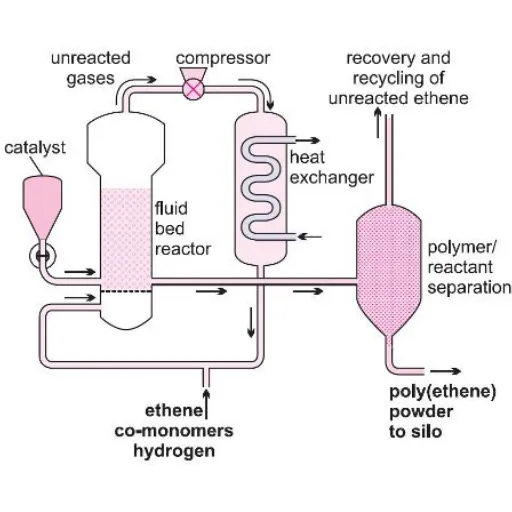
Polymerization of HDPE
The evolution of High-Density Polyethylene (HDPE) is the process of transforming ethylene monomers into long-chain polymers through the use of catalytic methods. This method is generally done in high-pressure or low-pressure, with the latter being the one most often employed due to its high efficiency and low cost. Ziegler-Natta or metallocene catalysts are the main players in this process, bringing together ethylene molecules into a solid, crystal-like polymer.
The most recent data indicates that the technological advancements in catalysts and the optimization of processes have resulted in HDPE production becoming more and more efficient. These changes have not only reduced the amount of energy needed but also made the quality of the polymers more uniform, which is in line with the worldwide sustainability aspirations. The demand for HDPE in the market is on the rise, especially in those sectors that need the plastic to be both strong and recyclable, and the projections indicate that the growth rate will be constant with the packaging, construction, and automotive manufacturing sectors being the main drivers.
🔬 Polymerization Process Overview
- Monomer Preparation: Ethylene monomers are prepared from petroleum or natural gas feedstock
- Catalyst Introduction: Ziegler-Natta or metallocene catalysts are added
- Polymerization: Low-pressure process creates linear-shaped chains with high molecular weight
- Formation: Solid, crystal-like polymer structure is formed
- Quality Control: Testing ensures uniform polymer quality
Common Molding Techniques for HDPE Products
High-Density Polyethylene (HDPE) is a multi-purpose substance that is frequently utilized in various fields, and molding techniques are usually part of the process of obtaining this polymer. The most common methods are as follows:
💨 Blow Molding
Bottles, tanks, and containers are examples of hollow products where blow molding is applied thoroughly. This technique involves blowing up hot HDPE inside a mold for the desired shape to be obtained.
Best For: Mass production of lightweight, strong hollow goods
💉 Injection Molding
Injection molding is very much suitable for the development of rigid and accurate HDPE items like caps, closures, and containers. The process heats up the polymer and fills molds with it, where it is cooled and solidified.
Best For: Precision components with exact dimensions
🔄 Rotational Molding
Rotational molding is very good at making large and seamless HDPE products such as tanks, playground equipment, and kayaks. Material is heated inside a rotating mold, and thus even distribution and thickness are achieved.
Best For: Large, seamless products with uniform wall thickness
➡️ Extrusion Molding
This process of molding is mainly performed for continuous and long HDPE forms such as pipes, tubes, and sheets. A die is used in pushing the molten HDPE to form products that are consistent in dimensions and strong.
Best For: Continuous profiles with consistent cross-sections
The application of these techniques along with the technological advancements has led to increased efficiency and pushed out the limits in HDPE applications. The feedback and statistics from recent research have shown that the demand for injection and blow molding is particularly high due to their major application in packaging and construction sectors. Meanwhile, rotational and extrusion molding are steadily increasing in demand, thanks to the innovations in the manufacturing equipment and the adoption of eco-friendly practices.
Quality Control in HDPE Production
Quality control is a key factor in HDPE production that guarantees the reliability and performance of the material in different applications. Among the critical procedures are the continuous and strict testing of the physical characteristics, like density, tensile strength, and impact resistance, plus confirming chemical stability and purity. By utilizing advanced data analytics and incorporating real-time monitoring systems, manufacturers can promptly identify inconsistencies and, therefore, reduce defects. According to the most recent reports, there is an increasing demand for sustainable and high-performance HDPE which leads companies to implement more rigorous recycling protocols and green production processes. This transition not only satisfies the customers’ needs but also contributes to the global sustainability initiatives, hence, HDPE is projected to be the material for the future.
✅ Quality Control Testing Parameters
Density Testing
Tensile Strength
Impact Resistance
Chemical Stability
Purity Analysis
Real-time Monitoring
Advantages and Disadvantages of HDPE
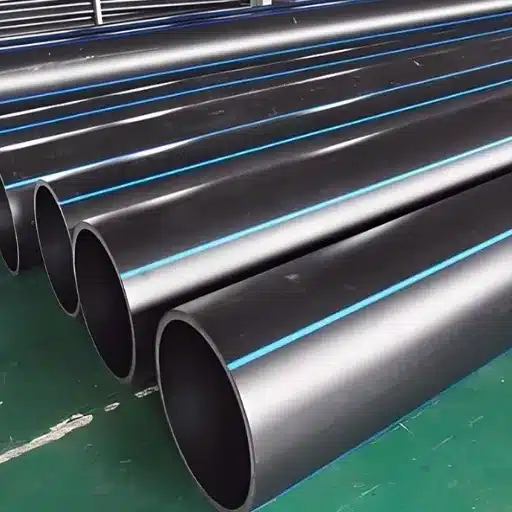
Benefits of Using HDPE
High-density polyethylene (HDPE) is a material of choice, and its advantages are really impressive. One reason why HDPE has been chosen by many different industries is that it is very tough and it can withstand impacts, chemicals, and the weather. Moreover, the strong and light characteristics of HDPE make it possible to save on transport costs and reduce the amount of material used.
As per the most recent data, consumers are giving more importance to the sustainability of solutions and HDPE goes hand in hand with this trend due to its life span and recyclability. Its environmental footprint is being reduced further by the implementation of stricter recycling protocols and the usage of eco-friendly production processes. Also, the ability to mold HDPE allows manufacturers to create it in different forms and sizes thus catering to the diverse needs of the industries while still maintaining global sustainability goals. All these reasons contribute to HDPE being the material of choice for both performance and eco-friendliness.
✨ Key Advantages of HDPE
- Exceptional Durability: Withstands impacts, chemicals, and harsh weather conditions
- Lightweight Design: Reduces transportation costs and material consumption
- 100% Recyclable: Supports circular economy and sustainability goals
- Long Service Life: Provides excellent return on investment
- Versatile Moldability: Can be formed into various shapes and sizes
- Cost-Effective: Lower production and maintenance costs
- Chemical Resistance: Resistant to corrosion and aggressive chemicals
- Low Moisture Absorption: Maintains integrity in wet environments
Disadvantages of HDPE
On the other hand, there are still some disadvantages of HDPE even though there are a lot of advantages. The main concern is connected to its production process, which is based on petroleum, a non-renewable resource, thus contributing to the environmental problem of greenhouse gas emissions. Furthermore, even if HDPE is recyclable, improper disposal and low recycling rates in certain areas can lead to the accumulation of plastic waste, which will, in turn, hurt the environment and living organisms. HDPE also has a lower UV resistance than other materials, which results in aging and brittleness when the material is not properly stabilized and is exposed to sunlight for a long time. Moreover, the rigidity of the material could limit its use in certain applications while its temperature restrictions make it less suitable for high-temperature environments as it can easily lose its shape or get warped. The moment has come for the manufacturers of HDPE to think of ways to innovate in the area of the sustainability of that material and its applications.
⚠️ Limitations to Consider
- Petroleum-Based Production: Relies on non-renewable resources and contributes to greenhouse gas emissions
- Recycling Challenges: Low recycling rates in some regions lead to plastic waste accumulation
- UV Sensitivity: Requires stabilization to prevent aging and brittleness from sun exposure
- Temperature Limitations: Can warp or deform in high-temperature environments
- Rigidity Constraints: May not be suitable for applications requiring extreme flexibility
- Environmental Impact: Improper disposal can harm ecosystems and wildlife
Comparative Analysis with Other Plastics
In the comparison of HDPE with other plastics, materials like Polyethylene Terephthalate (PET) and Polyvinyl Chloride (PVC) present some differences regarding sustainability, applications, and durability. HDPE is often celebrated for a high strength-to-density ratio, making it ideal for products such as containers, pipes, and toys. In contrast, PET, which is transparent and is predominantly used for drinking bottles, has more clarity than HDPE. Clarity notwithstanding, HDPE is the one that gets applied in industries that prefer more rigid, opaque uses. PVC is a case of flexibility, being able to serve several purposes, but then again it carries chlorine which makes the case against the material as it brings up the environmental concern of the release of harmful dioxins when the plastic is poorly disposed of or incinerated.
The case for the recycling of HDPE is higher than that of PVC hence it being more efficiently processed into new materials with fewer toxic byproducts as the main reason for that. The main reason for PET being placed at the top of the list of plastic materials regarding recycling rate is the food and beverage industry demand. Another factor is that in the high-temperature environment, HDPE products may warp, so one has to look for alternatives such as Polypropylene (PP). The unique strengths and weaknesses of each material remind us of the importance of polymer selection according to the specific application while the developing recycling technologies are lifting the environmental burden across plastic types.
| Plastic Type | Key Strengths | Main Applications | Recyclability |
|---|---|---|---|
| HDPE | High strength-to-density ratio, chemical resistance, opaque | Containers, pipes, toys, construction materials | High – efficiently recyclable with fewer toxic byproducts |
| PET | Transparency, clarity, lightweight | Beverage bottles, food packaging | Very High – highest recycling rate in food & beverage |
| PVC | Flexibility, multi-purpose applications | Pipes, window frames, medical tubing | Lower – releases harmful dioxins if improperly disposed |
| PP (Polypropylene) | High-temperature resistance, durability | Automotive parts, high-heat applications | Moderate – increasingly recyclable with new technologies |
Environmental Impact and Sustainability of HDPE
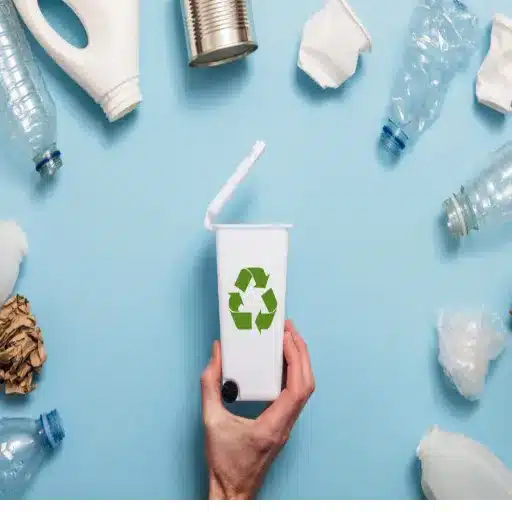
Recycling Processes for HDPE
Recycling HDPE is a process that is very common and it is aimed at reducing the environmental impact and promoting sustainability. The first step in the process is the collection and sorting, where the HDPE items are generally identified by the resin identification code “2” on their packaging. After sorting, the materials go through a cleaning stage in which they are cleaned well so that all the contaminants like food residue and labels are removed. Shredding the HDPE into flakes is the next step followed by the melting of the flakes and forming of the melted flakes into pellets which afterward are used as new product’s raw material.
♻️ HDPE Recycling Process Steps
- Collection and Sorting
HDPE items identified by resin code #2 are collected and separated from other plastics
- Cleaning Stage
Thorough removal of contaminants including food residue, labels, and adhesives
- Shredding
HDPE materials are mechanically shredded into small flakes
- Melting and Pelletizing
Flakes are melted and formed into pellets for reuse in manufacturing
- Remanufacturing
Recycled pellets are used as raw material for new products
According to recent data, the global trend toward greater efficiency in HDPE recycling is more pronounced than ever. New automated systems using AI and digital sorting technologies are making great strides in separating HDPE from other plastics with higher accuracy. Sustainability studies report that recycling rates for HDPE differ greatly across regions with some regions reporting over 30% recycling rates while others are not recycling at all. Meanwhile, the chemical recycling innovation is still in the research phase with its promise of decomposing HDPE into its individual molecules, which in turn, will be recycled into virgin-grade plastic.
Although these technologies have been developed and adopted, they are still facing challenges such as contamination of collected HDPE and infrastructures not being complete in some areas. It is crucial to tackle these barriers first before recycling rates can increase and altogether, the environmental impact of HDPE can be reduced, making a circular economy of plastics possible.
📈 Global Recycling Statistics
- Regional Variation: Recycling rates range from 0% to over 30% depending on location
- Technology Adoption: AI and digital sorting improving separation accuracy
- Chemical Recycling: Emerging technology with potential for virgin-grade plastic recovery
- Global Trend: Increasing efficiency in HDPE recycling processes worldwide
Sustainability Efforts and Innovations in HDPE
Chemical recycling is one of the most interesting and promising new sustainable practices in the HDPE area that is allowing the reuse of plastics by converting them back into their basic chemical parts. This way, there is a huge amount of recycled HDPE produced that can easily take the place of the virgin material. According to the latest market research, the recycled HDPE market is going to grow rapidly across the globe mainly because of the growing awareness of and demand for sustainable products from consumers as well as through regulations that want plastic waste to be reduced.
Established in the market of bioplastics, the next big step happens to be the introduction to the world of bio-based HDPE made from renewable sources like sugarcane, which eventually leads to a considerable cut down of the fossil fuel consumption. Scientific studies have shown that bio-HDPE can be as good as, if not better than, conventional HDPE in terms of its functionality and this is why it is a great option. Plus, the efforts of the manufacturers to come up with better collection systems and to create things that are easier to recycle have resulted in more efficient recycling methods. To illustrate, one of the ways packaging may be done with only one material so as to yield better recycling and the harvested materials’ quality will also be better.
🔬 Chemical Recycling
Breaks down HDPE into basic chemical components for conversion back to virgin-grade plastic
🌱 Bio-Based HDPE
Made from renewable sources like sugarcane, significantly reducing fossil fuel consumption
📦 Design for Recyclability
Single-material packaging designs improve recycling efficiency and material quality
When considering the impact of technological innovations in HDPE on the environment, it becomes evident that the combination of technological breakthroughs, support from regulations, and awareness among consumers are all factors that are contributing to the creation of a circular plastics economy. Even though there are still problems such as contamination and lack of proper infrastructure, the constant efforts to take advantage of the most advanced solutions offer a ray of hope that eventually, the environmental effects of HDPE will be reduced and a sustainable future will be reached.
Challenges in HDPE Waste Management
Dealing with HDPE waste is not only a complex but also a challenging task since one of the aspects to be tackled is contamination which comes with limited recycling facilities. One of the major problems is obtaining the desired outcome of efficiently separating HDPE from a mixture of waste streams because the presence of non-recyclable or incorrectly discarded materials will lead to contamination of the whole batch. This not only lowers the properties of the recycled products but also makes it less attractive for the market because of its diminished value. In addition, the results of the latest studies reveal that despite the increasing global HDPE production, the recycling rate is still a dismal 10%-15% in many parts of the world, as per international waste studies.
The other major problem is that there are no recycling facilities with state-of-the-art technology. The more advanced methods of chemical recycling are still very much in research and development but they could, however, greatly increase the potential for HDPE recovery, but remain quite expensive and are therefore not universally accessible yet. The lack of recycling facilities leads to more dependence on landfilling or incineration for disposal of HDPE waste thus further polluting the environment.
Raising the public’s consciousness about these issues is also very necessary. The behaviors of consumers can either enhance or degrade the efficiency of the recycling processes for HDPE as improper habits of using and disposing of materials tend to reduce the sorting accuracy and increase contamination. Overcoming these issues is going to take a partnership that combines public awareness, investment in new technologies, and reform of policies to form a more effective system for managing HDPE waste.
🚧 Major Challenges in HDPE Waste Management
❌ Contamination Issues
Non-recyclable materials mixed with HDPE reduce quality and market value of recycled products
📉 Low Recycling Rates
Global average of 10-15% despite increasing production volumes
🏭 Infrastructure Gaps
Lack of advanced recycling facilities with modern technology
💰 Cost Barriers
Advanced chemical recycling methods remain expensive and not universally accessible
👥 Consumer Behavior
Improper disposal habits reduce sorting accuracy and increase contamination
🗑️ Disposal Methods
Reliance on landfilling and incineration increases environmental pollution
FAQ
What are the physical characteristics of high-density polyethylene (HDPE plastic)?
The high-density polyethylene plastic has a linear arrangement and a fairly high molecular weight. The latter grants it a higher density and good impact toughness, which is why HDPE is more pronounced than LDPE. The density of HDPE is almost always between about 0.93 to 0.97 g/cm³, and its intermolecular forces and tensile strength open the door to applications like HDPE sheet and plastic lumber. HDPE is an intermediate temperature resistant plastic but it can get soft at a high temperature and therefore the right grade selection of HDPE becomes essential for thermal performance. It can withstand many chemicals which is why it is used in bleach bottles, shampoo bottles, and food and beverage containers even though it is made of petroleum-derived polyethylene materials. All these physical properties make HDPE’s flexible use in many industries.
What are the advantages of HDPE making it a popular hdpe product?
The strong points of hdpe include great impact strength, chemical resistance, low moisture absorption and a price that is relatively low as compared to other engineering plastics. HDPE sheets are used in various applications where homogeneity and good mechanical properties are needed while cutting boards made of HDPE are easily cleaned; besides, these properties confirm the use of hdpe in plumbing and the construction of plastic lumber. Because HDPE is a recyclable versatile plastic material, it is often found in the production of drinking water bottles and in the food and beverage sectors as one of the most common plastics. The high molecular weight and standard HDPE grades provide better toughness and wear resistance, while the different types of HDPE allow the selection for specific uses. All these advantages make HDPE applicable in the household, industrial, and construction sectors in the manufacturing process.
How do hdpe plastic sheets measure up against the other polyethylene materials?
Sheets made from HDPE plastic are denser and generally stronger than those made from the low-density variant, thanks to the higher molecular weight and linear structure that enhances the intermolecular forces and tensile strength. When compared to other polyethylene materials, hdpe mterial sheets provide excellent stiffness and no resistance to creep, even better than their other counterparts. Thus, they are preferred in areas like cutting boards, structural components, and plastic lumber to name a few. HDPE plastic also does not react with most cleaning chemicals and bleaches that are normally used for sanitation; thus it finds applications in food and beverage containers as well as plastic cutting boards. However, HDPE is less heat resistant compared to certain engineering plastics; hence it should not be placed in situations where it would be exposed to high temperatures or high heat. The final performance for a range of applications would be impacted by the selection of the right grade HDPE as well as whether it is standard HDPE or a high molecular weight variant.
Are there drawbacks of HDPE that I should worry about when it comes to outdoor applications and pipes?
Though HDPE boasts several features, the following disadvantages must also be taken into consideration: limited performance at very high temperatures, potential UV degradation if not stabilized, which can be critical for hdpe pipes and plastic lumber. Some grades are as stiff as engineering plastics, so in load-bearing applications thicker sections or reinforced designs may be required to satisfy the strength demand. HDPE is derived from petroleum, thus the impact on the environment as well as recyclability should be factored into the lifecycle planning. In addition, the specific chemical resistance differs for each type of hdpe thus the compatibility with agressive solvents or fuels has to be verified. In spite of these limitations, HDPE continues to be one of the most widely used plastics as it strikes an optimal balance between cost, impact strength, and chemical resistance across many applications.
What is the process for manufacturing high density polyethylene and what does “grade HDPE” refer to?
High-density polyethylene creation involves ethylene that is obtained from the petroleum or natural gas feedstock polymerization and catalysts are being used that cause the creation of linear-shaped chains with higher molecular weights. Grade HDPE is a term that refers to various formulations and molecular weight distributions specifically concocted for characteristics like stiffness, impact strength, and processability, and that are suitable for extrusion of making hdpe plastic sheets or molding of shampoo and water bottles. Standard HDPE grades are utilized for the production of products like bleach bottles and food and drink containers while high molecular weight grades are picked when superior toughness or abrasion resistance is required. Additives and stabilizers can render UV resistance and high temperature performance good for outdoor or high heat applications. The selected grade will ensure that the hdpe product will meet the requirements of its use.
Reference Sources
-
Harvard University – NASA ADS Abstract: A detailed overview of HDPE as a key member of the polyolefin family, discussing its importance as a commodity polymer.
Polyethylene: High-Density -
North Carolina State University – BioResources: Research on the mechanical and thermal properties of HDPE composites, highlighting its performance in various applications.
Mechanical and Thermal Properties of HDPE -
University of Texas at Arlington: A study comparing the performance of HDPE pipes in municipal water applications, addressing challenges like water loss.
Performance Comparison of HDPE Pipe







